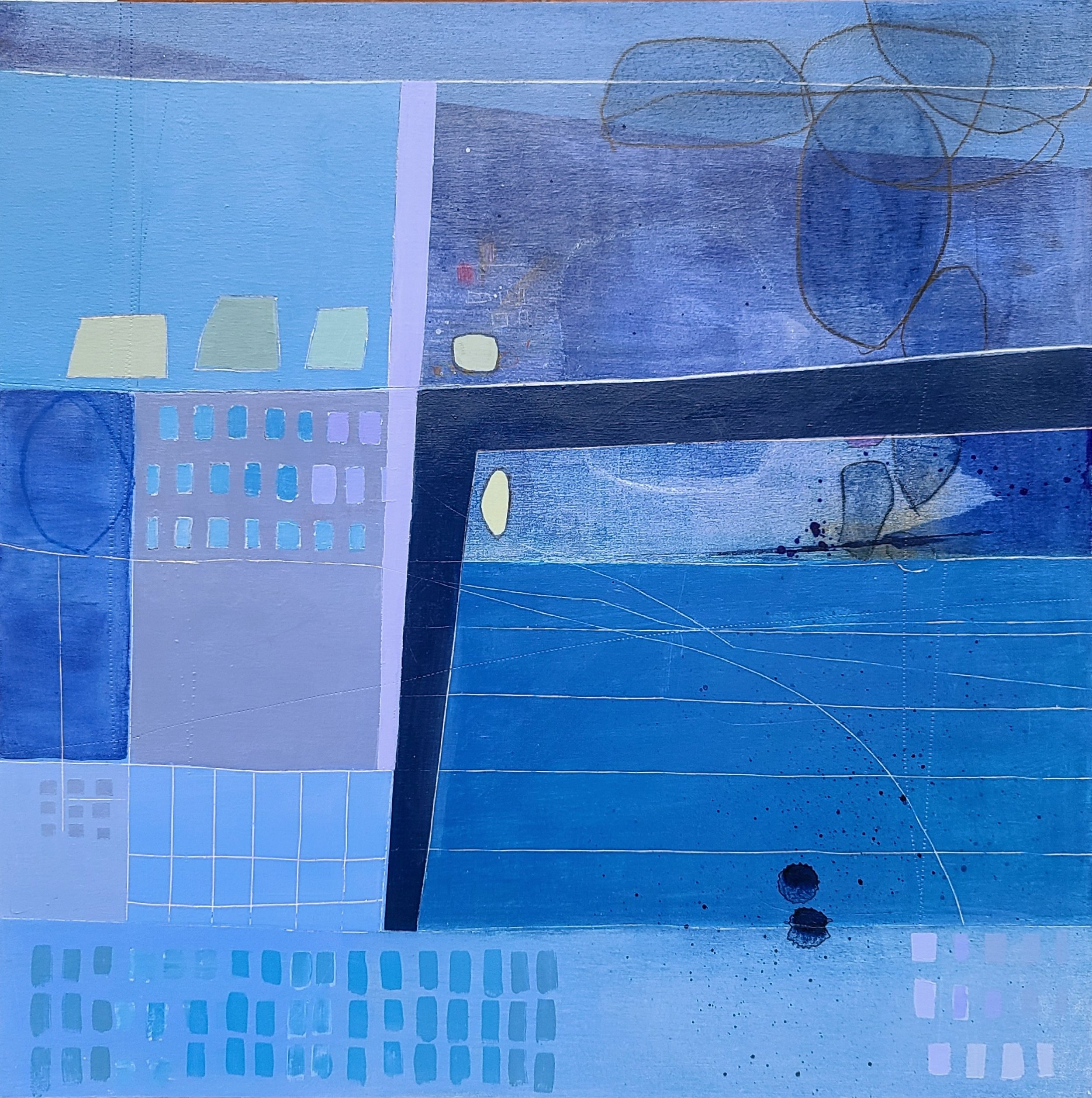Marking time in abstract landscape paintings
Journeys, migrations and the passage of time
How do you express the idea of moving through time, in paint?
Representing time in abstract visual language is a problem I confront again and again in my abstract landscape work. Time is a central idea as I think about journeys and the historical movements and migrations of people across the landscapes I love to paint.
Meandering lines run through my work, recalling the feeling of a journey, or simply moving along a path. A pathway maps the route from one place to another. Ancient pathways in particular fascinate me and I’ve written about the use of paths in my art here.
But journeys are also the passage of time, not only distance. A journey might last a few hours or days, while the migration of people could take years or even generations. Temporal and spacial aspects of movement are equally important to me in many of my paintings.
Tallies are among the most basic of marks used to represent time.
Some years ago during a visit to a rural area in northern Ghana I was shown examples of how earlier generations had kept a tally of seasons and years using marks like these on exterior walls.
Such an elegant solution. I began scratching tally marks into ceramic bowls, and later they showed up in paintings as well. And I adore them because
the physical sensation of making a series of quick, sharp strokes is satisfying;
the rhythmic pattern is visually pleasing; and
tallies make complete sense to me as a way to express time in the visual language of abstract painting.
Tally marks in the under layers of a painting
Using rectangles and other shapes
Developing the idea of simple tallies, I also enjoy using rectangles and other shapes, arranged in lines or groups, to stand in for time.
With these more fulsome elements, I can express different qualities of time by varying their size, shape, opacity, or hue.
The way I make these types of marks has evolved significantly over time, and I’m still searching…
The layers-upon-layers in my work are another way I can embody the notion of time and history (and I’ll write more about that in a later post).
Do you try to express time in your work?
I’d love to hear your thoughts in the comments below…
If you’d like to see me “putting in the time” on a couple of recent panels, try this shortie:
Watch how I represent time with a series of rectangles in this short video.
Let’s connect!
Time tallies weave across the landscape in Take the Long Way Home 60x60 cm. Look for more tallies in my paintings here.






